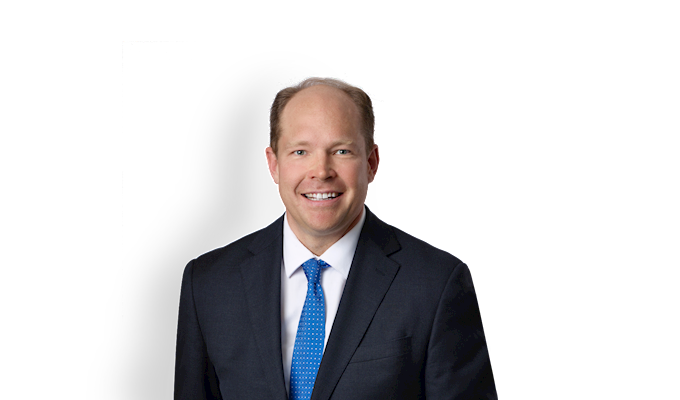A decision by what was then the Alberta Court of Queen’s Bench finds that a commercial landlord does not always qualify as an “owner” under the former Builders’ Lien Act (BLA)1, now the Prompt Payment and Construction Lien Act (PPCLA).
Issue and decision
In Synergy Projects (Destiny) Ltd. v Destiny Bioscience Global Corp., 2022 ABQB 384 (Synergy), the Court found that the landlord, 718721 Alberta Ltd. (718), was not an “owner” as that term is defined in the BLA, and therefore, was not subject to a lien that was registered against the fee simple interest.
Smart Grow Pros, LLC (Smart Grow) was hired as a design consultant by the tenant, Destiny BioScience Global Corp. (Destiny). Destiny failed to pay its invoices to Smart Grow. Consequently, Smart Grow registered a lien against 718’s fee-simple interest. The questions for the Court were whether 718 was an “owner” per the BLA; and if 718 was found not to be an “owner,” whether the lien could be treated, via the BLA’s curative provision (s. 37)2, as a lien against Destiny’s leasehold interest instead.
Justice Lema concluded that 718 was not an “owner” as that term is defined in the BLA and that the BLA does not authorize “a conversion of a lien aimed at one party and one interest into one aimed at another party and another interest”.3 Smart Grow’s lien named both the wrong interest and the wrong interest holder, and this was not a forgivable shortcoming that could be remedied using the BLA’s curative provision. Accordingly, Smart Grow’s lien against the fee-simple interest was deemed invalid by the Court.
Analysis
Is the landlord an “owner” per the BLA?
The BLA defines “owner” as a person having an estate or interest in land at whose request, express or implied, and (i) on whose credit, (ii) on whose behalf, (iii) with whose privity and consent, or (iv) for whose direct benefit work is done for an improvement in the land.4
No express or implied request
All of the parties agreed that 718 had an estate or interest in the land, so the first issue to be decided was whether 718 requested, expressly or implicitly, that work be done for an improvement in the land. Smart Grow argued that because the lease between 718 and Destiny obliged Destiny to construct one or more buildings on the leased lands, 718 had expressly or impliedly requested Smart Grow’s services to be performed.
In determining whether or not 718 had expressly or impliedly “requested” the work be performed by Smart Grow, the Court considered the facts of the case and specific sections of the lease agreement, including the “Tenant’s Work” section which stated that “the tenant shall be responsible for all work and costs with respect to the construction of the building and all related improvements and structures required for the tenant’s business operations save and except for the landlord’s work.” Further, the lease did not oblige Destiny to complete construction by a particular date and the benefit to 718 under the lease was never dependent on whether the construction was completed, or even begun, by any particular date, nor were the rents payable by Destiny tied to the state of construction of the facilities. Indeed, the Court concluded that the lease was binding even if no construction ever took place on the premises. The Court concluded that the relevant facts, and these sections of the lease, amongst others, suggested that the construction on the leased land was within Destiny’s full control. The Court then turned to 718’s involvement in the project.
The Court focused on the core involvement of 718 with respect to the project. Justice Lema distinguished Synergy from Northern Electric Co. Ltd. v Manufacturer's Life Insurance Co., [1977] 2 SCR 762 (Northern Electric). In Northern Electric, the tenant was effectively a construction contractor for the owner. The owner was to receive a share in the ongoing rental income generated by the development and financed the project. The Court concluded that Synergy was distinguishable from the facts of Northern Electric because 718 had no involvement in the project, no interaction with Smart Grow, only received a base rent amount, and was not responsible for financing the project.
Justice Lema drew an analogy between Synergy andStealth Enterprises Ltd. v Hoffman Dorchik, 2000 ABQB 311 (Stealth). In Stealth, the owner of an apartment block agreed to sell to a condominium-intending party, which started but could not finish certain renovation work. The Court in Stealth found that the owner was not an “owner” as that term is defined in the BLA, stressing its minimal participation in the renovation work. In Stealth, while the owner generally understood what was planned and was updated as to what was happening with the construction on a regular basis, it did not actively participate in the construction and, therefore, its level of participation was not enough to establish any liability on the part of the landlord under the BLA. The Court reached the same conclusion in Synergy, finding that a “request” for the purposes of the BLA definition of “owner” must be something more than a mere passivity or acquiescence and must involve an active or positive proposal.
No direct benefit
According to the definition of “owner” in the BLA, in addition to having an estate or interest in the land and requesting that the work be completed, the person must meet at least one of the other four criteria in the definition. In this regard, Smart Grow argued that 718 had received a “direct benefit” from the leasehold improvements.
In dismissing Smart Grow’s arguments, the Court referred to three SCC cases, including Northern Electric, which all clarify that there must be some immediate benefit for there to be a “direct benefit”. In Synergy, the Court concluded that there was no rent-related direct benefit because 718’s rent entitlement remained the same whether construction was completed or even begun and where “718 did not receive any profit or revenue-based rent.”5
The Court also concluded that there was no reversion-related direct benefit to 718, finding that a landlord’s reversion does not qualify as a “direct benefit” because it is not necessarily immediate in the sense that it relies upon some breach or forfeiture by the tenant or eventual termination of the lease. In Synergy, given the focus of the proposed structures (marijuana-cultivation-and-research) and the fact that the lease did not impose any structure specifications, along with the fact that the length of the lease was possibly 25 years, the Court accepted that there was no immediate benefit and no certainty of any future benefit to the landlord in the improvements made by Destiny. The Court concluded that the fact that a landlord may eventually benefit on the happening of some speculative future event if its tenant makes improvements to the leased premises, is not enough to satisfy the requirement of an owner’s direct benefit under the BLA. Accordingly, the Court found that 718 did not derive any direct benefit from the construction undertaken by Destiny.
Could Smart Grow’s lien against 718 be treated as a lien against Destiny under the BLA?
Justice Lema confirmed at the beginning of his decision that Destiny’s leasehold interest was lienable. Smart Grow argued that if its lien against 718’s fee-simple title was invalid, then it could rely upon the curative provision (s. 37 of the BLA)6 to validate the lien against Destiny’s leasehold interest.
Justice Lema wrote that “it was obviously open to Smart Grow to register a lien against the tenant’s leasehold interest.” Instead, Smart Grow registered the lien against 718’s fee-simple interest. As a result, Destiny’s leasehold interest had no registration at all. Therefore, the Court concluded that this was not a case of “substantial compliance”, with a forgivable shortcoming, rather, it was complete non-compliance. In doing so, the Court effectively overturned or refused to endorse Empire Drywall Ltd v Kim (1982) 1982 CanLII 1187 (AB KB), 21 Alta LR (2d) 399, where Master Quinn found “substantial compliance” where a lien, sought to be registered against a subtenant, was registered against the landlord’s fee-simple interest.7
Key takeaways
- When a Court is determining whether a party is an “owner” per the BLA (now the PPCLA), the “request” analysis will focus on whether the party was actively involved in the project.
- The fact that a landlord will eventually benefit from its tenant’s improvements on leased lands is not, on its own, sufficient to prove that the landlord has experienced a “direct benefit” per the BLA (now the PPCLA).
- If a lien is registered against the wrong party and on the wrong interest, it cannot be treated, by way of curative provision or otherwise, as a substantially compliant lien.





